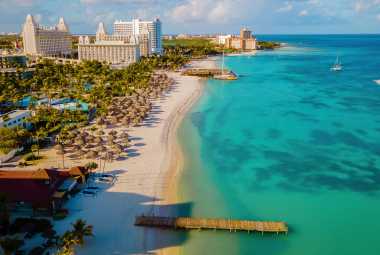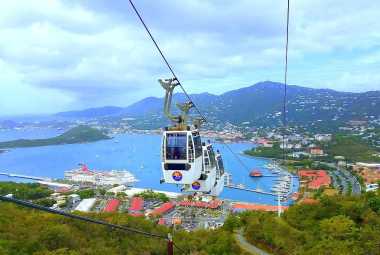Image by belizeadventure.ca
*Vacation Mode is a for-profit site. It contains paid banner advertisements that are generated and managed by a third-party network. This site also includes relevant affiliate links (both in the content and on the sidebar) all of which we do our best to clearly mark as such.
Glover's Reef Atoll can be found just a short distance from the coast of Belize. The American explorer William H. Glover, who made the discovery in 1848, is honored with the naming of this reef. Since that time, it has developed a reputation as a desirable location for snorkelers and divers both.
Because of its proximity to the coast of Ambergris Caye, Glover's Reef Atoll is a popular tourist destination in Belize. Dive Belize is one among the several scuba diving companies that provides trips to the atoll for their customers. These businesses offer not only transportation to the reef but also gear and lessons for anyone interested in scuba diving.
Divers at Glover's Reef Atoll can look forward to seeing a variety of tropical fish, coral reefs, and other marine life when they are underwater there. And although Glover's Reef Atoll is home to hundreds of different species of fish, turtles, sharks, and rays, in addition to other types of marine life, it is also home to over one hundred different kinds of corals. Fan coral, brain coral, staghorn coral, elkhorn coral, and mushroom coral are some of the more frequent species that may be found in this region.
Summer and winter are the two unique seasons that provide divers with the opportunity to explore Glover's Reef Atoll. Because of the lack of waves and the consistently high temperature of the water throughout the summer months, visibility is typically very good. Even if the waters aren't completely transparent at all times, there is still the possibility of risk-free exploration.
However, throughout the months of winter, there is a significant difference in the weather conditions. The visibility is greatly reduced, which makes it challenging to investigate the reef. In addition to this, the water temperature can drop to minus 20 degrees Celsius, which makes the environment unpleasant for both humans and animals.
It is recommended that divers pack additional layers of clothing and wear wetsuits throughout the winter season. This will help them prevent any issues that may arise. In addition to this, make it a priority to plan dives during the daytime rather than at night if at all possible. It is more difficult to notice hazards underwater when diving at night, which can put divers in potentially hazardous circumstances.
The Glover's Reef Atoll is a protected area, which means that in addition to being a stunning location to visit, it is also home to a variety of wildlife. As a result, it is against the law to take anything from the reef or to interfere with the natural ecosystem in any way. In order to conserve the reef and minimize any potential for damage, visitors are required to adhere to specific restrictions.
To give just one example, fishing is prohibited anywhere within 200 meters of the reef, and anchors of any kind are not allowed. In addition, divers are not allowed to touch any living organism, which includes corals, plants, sponges, jellyfish, or any other marine life they may encounter during their dives. Last but not least, there is a complete ban on pollution anywhere in the reef's immediate vicinity.


















